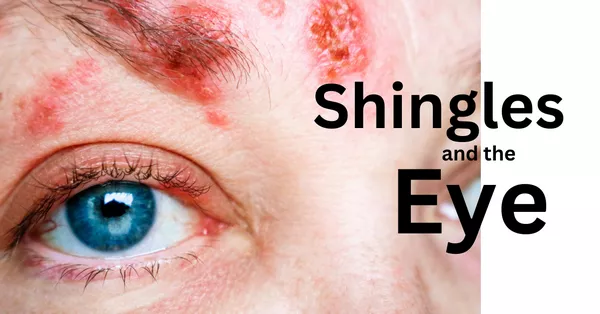Shingles, also known as herpes zoster, is a painful skin rash that is caused by the reactivation of the varicella-zoster virus (VZV) — the same virus that causes chickenpox. While shingles can affect anyone who has had chickenpox, it is more common in adults, particularly those over the age of 50. This article will delve into the mechanisms of shingles, risk factors, symptoms, complications, and prevention strategies.
Understanding the Varicella-Zoster Virus
The Varicella-Zoster Virus Lifecycle
The varicella-zoster virus is a member of the herpesvirus family. When a person is first infected with VZV, they develop chickenpox, a highly contagious disease characterized by an itchy rash and flu-like symptoms. After the initial infection resolves, the virus does not leave the body but instead remains dormant in the nerve tissue near the spinal cord and brain. This dormant state can last for decades.
Reactivation of VZV
Shingles occurs when the dormant VZV reactivates. The reasons for reactivation are not fully understood, but it is believed to be linked to a weakened immune system. When the virus reactivates, it travels along the nerve pathways to the skin, causing shingles.
Risk Factors for Shingles
Age
Age is the most significant risk factor for developing shingles. The immune system naturally weakens as we age, making it easier for the dormant virus to reactivate. Approximately half of all shingles cases occur in people aged 60 or older.
Immunosuppression
Individuals with weakened immune systems are at higher risk for shingles. This includes people with conditions such as HIV/AIDS, cancer patients undergoing chemotherapy, and those on immunosuppressive medications like corticosteroids or drugs used to prevent organ transplant rejection.
History of Chickenpox
Anyone who has had chickenpox is at risk for developing shingles later in life. Since the varicella-zoster virus remains in the body after a chickenpox infection, the possibility of reactivation always exists.
Stress and Trauma
Stress and physical trauma can weaken the immune system, potentially triggering the reactivation of VZV. Major life events, emotional stress, and physical injuries can all contribute to the risk.
Certain Medical Conditions
Chronic diseases such as diabetes, kidney disease, and rheumatoid arthritis can compromise the immune system, increasing the likelihood of shingles. Additionally, conditions that affect the nervous system, such as multiple sclerosis, can also be risk factors.
Symptoms of Shingles
Early Symptoms
The early symptoms of shingles often include pain, burning, tingling, or itching in a specific area on one side of the body. These sensations can occur several days before the rash appears and are usually localized to the area where the rash will develop.
The Rash
The shingles rash typically starts as red patches that quickly develop into fluid-filled blisters. These blisters are often arranged in a stripe or band-like pattern, corresponding to the nerve pathways affected by the reactivated virus. The rash usually appears on one side of the body, often on the torso, but it can also affect the face, neck, or other areas.
Pain
Pain is a hallmark of shingles and can range from mild to severe. It is often described as burning, throbbing, or stabbing. For some, the pain can be debilitating and persist long after the rash has healed, a condition known as postherpetic neuralgia (PHN).
Other Symptoms
In addition to the rash and pain, shingles can cause fever, headache, chills, and upset stomach. Some people may also experience sensitivity to light and fatigue.
Complications of Shingles
Postherpetic Neuralgia (PHN)
Postherpetic neuralgia is the most common complication of shingles. PHN occurs when the nerve fibers damaged by the varicella-zoster virus send exaggerated pain signals to the brain. The pain from PHN can be severe and debilitating, lasting for months or even years after the rash has healed.
Vision Loss
If shingles affects the eye (ophthalmic shingles), it can lead to painful eye infections and inflammation that may cause temporary or permanent vision loss.
Neurological Problems
In rare cases, shingles can cause inflammation of the brain (encephalitis), facial paralysis, or hearing problems. These complications can be serious and require immediate medical attention.
Skin Infections
The shingles rash can become infected with bacteria, leading to skin infections such as cellulitis. Proper care and hygiene are essential to prevent this complication.
Prevention and Vaccination
Shingles Vaccine
The most effective way to prevent shingles and its complications is through vaccination. The Shingrix vaccine, approved by the FDA, is recommended for adults aged 50 and older. Shingrix is administered in two doses, two to six months apart, and has been shown to be more than 90% effective in preventing shingles and PHN.
SEE ALSO: Is Shingrix Covered by Aetna?
Who Should Get Vaccinated?
- Adults 50 and Older: The CDC recommends that all adults aged 50 and older receive the Shingrix vaccine, regardless of whether they recall having had chickenpox.
- Adults with Certain Medical Conditions: Those with weakened immune systems due to disease or treatment should consult their healthcare provider about getting vaccinated.
Other Preventive Measures
- Healthy Lifestyle: Maintaining a healthy lifestyle with a balanced diet, regular exercise, and adequate sleep can help keep the immune system strong.
- Stress Management: Managing stress through techniques such as meditation, yoga, and other relaxation practices can also help reduce the risk of shingles.
Diagnosis and Treatment
Diagnosis
Shingles is typically diagnosed based on the characteristic appearance of the rash and the presence of pain in a specific area. In some cases, laboratory tests such as polymerase chain reaction (PCR) or viral culture may be used to confirm the diagnosis.
Antiviral Medications
Antiviral medications such as acyclovir, valacyclovir, and famciclovir can reduce the severity and duration of shingles if started within 72 hours of the appearance of the rash. These medications work by inhibiting the replication of the virus.
Pain Management
Pain management is a crucial aspect of shingles treatment. Over-the-counter pain relievers such as acetaminophen or ibuprofen can help alleviate mild pain. For more severe pain, prescription medications such as anticonvulsants, tricyclic antidepressants, or opioids may be necessary.
Topical Treatments
Topical treatments such as calamine lotion or lidocaine patches can provide relief from itching and pain associated with the shingles rash.
Preventing Complications
To prevent complications, it is essential to keep the rash clean and dry, avoid scratching, and follow a healthcare provider’s recommendations for wound care.
Living with Shingles
Coping with Pain
Coping with the pain of shingles can be challenging. Applying cool compresses, taking cool baths, and wearing loose clothing can help reduce discomfort. Additionally, support groups and counseling can provide emotional support and coping strategies.
Impact on Daily Life
Shingles can significantly impact daily life, especially for those with severe pain or complications. It is important to communicate with employers, family, and friends about the condition and seek help when needed.
Long-Term Outlook
Most people recover from shingles within a few weeks, although some may experience lingering pain or complications. Early treatment and vaccination are key to reducing the risk of severe outcomes.
Conclusion
Shingles is a painful and potentially debilitating condition that primarily affects adults, particularly those over the age of 50. Understanding the varicella-zoster virus, recognizing the risk factors and symptoms, and taking preventive measures such as vaccination can significantly reduce the likelihood of developing shingles and its complications. If you suspect you have shingles, seek medical attention promptly to receive appropriate treatment and minimize the risk of long-term effects.
Related Topics:



























